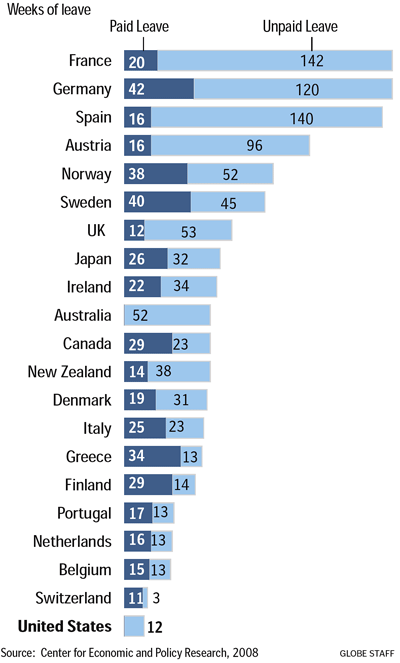We just passed by Women’s Equality Day (26 August). As the American working world evolves, we at Adoption Engine hope that maternity and family leave is evolving beyond the FMLA (Family and Medical Leave Act of 1993). The FMLA requires employers to provide 12 weeks of unpaid leave to parents of both biological newborn and newly-adopted children. This benefit is different from most other industrialized nations in its short duration as well as its lack of financial support for parents taking this leave. The infographic here shows paid/unpaid leave benefits internationally as of 2008. What a stark picture this paints! 
Many large American corporations offer some paid benefits and those are well appreciated. But when we step back to look at this as a social and emotional benefit – what is this short leave and lack of financial support telling our children?
Adding another member to your household – especially one who has a different sleep schedule than yours can be quite a rude awakening. (4 am feedings, anyone?) How can you be razor sharp for a Board call at 8 am the morning after a high fever?
How can we begin to understand the impact of FMLA on the workforce? One place to start is looking at the high rate of working mothers.
In 2013, 69.9% of working women had children under 18. 57.3 % of the working moms in 2013 were parenting infants*. The impact of close to 60 % of your female work force taking off at least one fiscal quarter is a lot. But how do other countries do it?
There has been much talk of leaning in, and checking out. It’s not so clear cut. But reflecting on what women’s equality means in 2015, it’s surely doesn’t hold the same meaning for all of us.
What do you think?
*Source: Bureau of Labor Statistics, U.S. Department of Labor, http://www.bls.gov/news.release/famee.toc.htm (Tables 5 and 6), 2013 annual averages.
